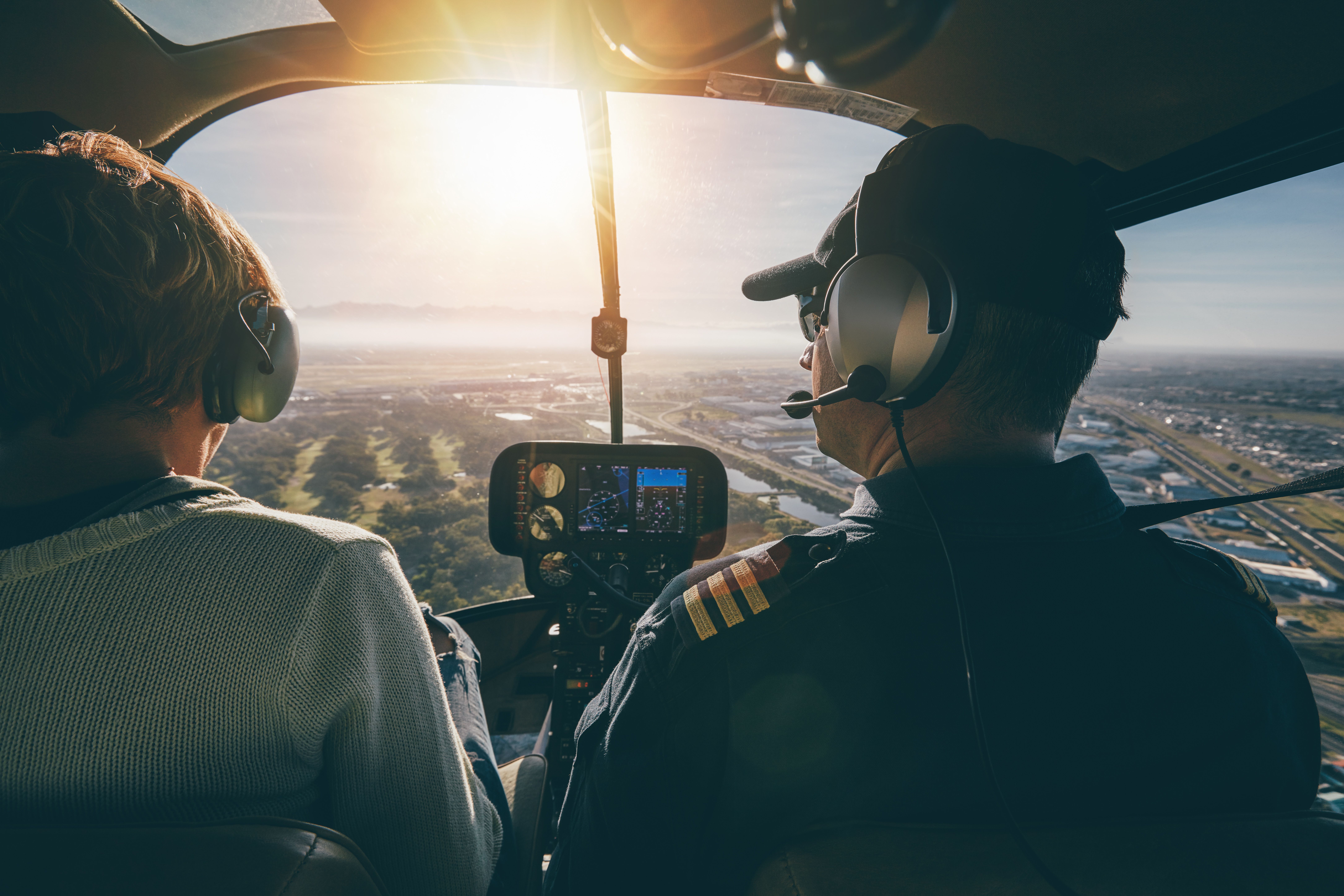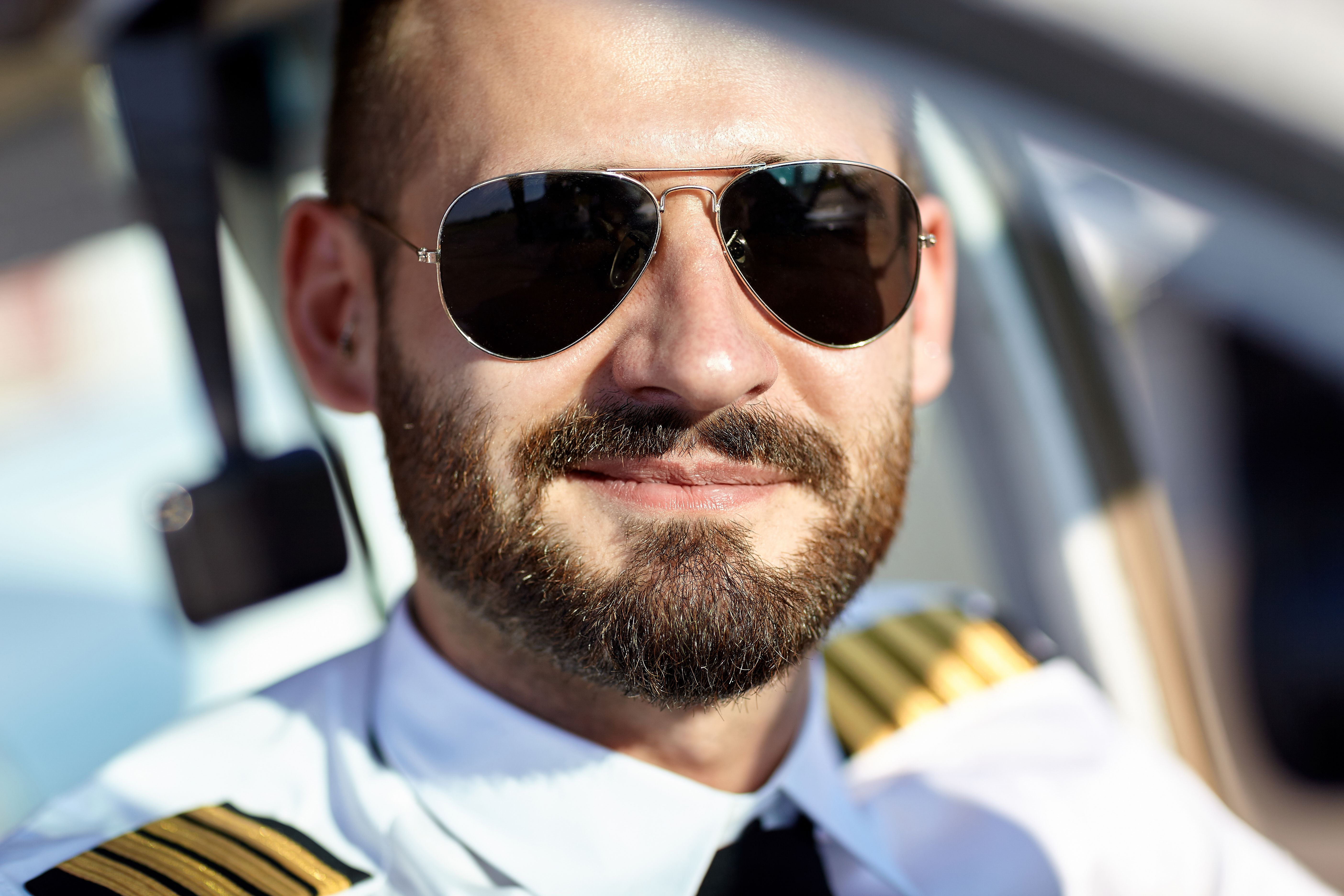Sunglasses can do a lot for pilots. They can be a fashion statement, but more importantly, serve roles as vision correctors and protectors. Let's briefly talk about why sunglasses are important to pilots.
The sun emits radiation in both infrared and ultraviolet forms. Infrared radiation is regarded as harmless, but ultraviolet (UV) radiation is harmful to tissues such as the skin and eyes. According to a Federal Aviation Administration bulletin, the amount of UV radiation increases by 5% for every 1,000 feet of altitude gained due to the decreased amount of protection available from the atmosphere.
Given this value, the amount of UV radiation experienced by direct sunlight at 20,000 feet is twice that at the surface. Flight decks often have tinting on the windows that helps prevent some of this radiation pass through, but pilots are well aware of the increased UV exposure while at work. Given the option, some pilots choose to fly at lower altitudes to limit the amount of UV exposure. Pilots also use shade screens and, importantly, sunglasses to protect their vision.
Want answers to more key questions in aviation? Check out the rest of our guides here.
Though counterintuitive at first, pilots do not wear polarized sunglasses. Polarization helps reduce the glare from bright surfaces because it only allows light from one direction (usually vertically) to pass through the lenses. Light emitted from flight deck displays, like the primary and multifunction flight displays, is emitted horizontally.
This makes the displays appear as black boxes unless you were to tilt your head sideways. You might have experienced something similar with a cell phone or tablet while wearing polarized lenses. To ensure displays are visible, pilots have to wear sunglasses that are non-polarized.
A lot of pilots use sunglasses to meet legal eyesight requirements. Contrary to popular thought, pilots do not need perfect vision. FAA medical standards require that pilots have 20/40 near-vision eyesight, and this can be achieved through corrective measures such as Lasik surgery, contact lenses, or conventional glasses.
Corrective eyewear is acceptable so long as a quick-donning oxygen mask can be worn without interference. For pilots who use conventional glasses as a means of correcting vision, wearing prescription sunglasses during daylight operations is a legal requirement for holding their medical certificate.
A consideration for general aviation pilots is the usefulness of sunglasses for protecting their eyes in the case of a bird strike. Bird strikes are relatively common, especially at the lower altitudes which general aviation aircraft exclusively operate at. There are plenty of videos and testimonials of bird strikes that have resulted in the plastic or carbon fiber windshield failing and blowing back into the pilot's face.
On a single-engine plane, the wind generated by the props is additionally abrasive to the eyes should the window fail for any reason, bird strike or other. For these reasons, the FAA acknowledges the safety enhancement that wearing glasses provides.
Sunglasses often serve more purposes than making flying more comfortable on a sunny day. Whether correcting vision, protecting eyesight, or halting flying debris, sunglasses make a measurable difference to the flying community.
Source: FAA.gov



